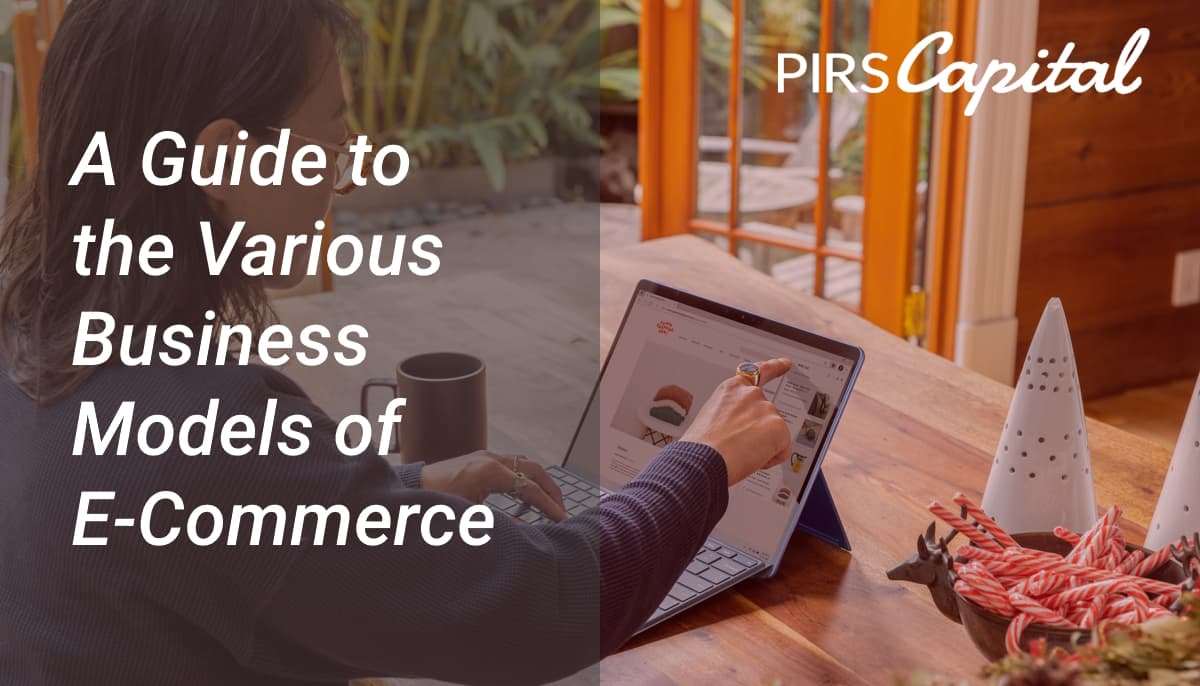
With everything being online it’s no surprise that e-commerce businesses are thriving. Sales continue to increase by astronomical numbers with each passing day. What may work for others doesn’t necessarily mean it’s going to work for you if you don’t know the fundamentals.
To be profitable, you not only need to know the market but should also have intuition and a solid business plan as well. Business models of e-commerce are usually researched years in advance before they are started. The perfect e-business models, if done well, will see you thriving in no time.
Familiarizing yourself with the different models of e-commerce allows you to be able to place yourself in different industries while still knowing how to react when things take a turn for the worse.
What Are the Different Types of E-Commerce Models?
With e-commerce, it isn’t just one type of e-commerce business model that fits all. Just like how there are different businesses, there are different e-commerce models as well. Your first step to starting will be determining which one fits your style before you can experiment.
The most common is B2C or business-to-consumer. You see a lot of these because they are the easiest to run and provide a steady income stream. They sell their products and services directly to individuals. This has retailers and distributors between the manufacturer and consumer.
Then there are other types such as business-to-business, business-to-government, consumer-to-consumer, and consumer-to-business. As you can see they each focus on one group at a time but they can change.
What Are the Types of E-Business?
E-businesses can be anything and everything. It can differ from online services to online markets. Many consumers are even paying for unique products and services that can only be found online. Small businesses take this route because they can safely compete with big businesses.
But you don’t need to have an actual product in your inventory. Different types of e-business can be built by third-party service providers as well. This further branches out to things like software as:
- Service providers
- Platforms as a service
- Infrastructure as a service
- Direct to consumers
You might be asking why some of these businesses are needed, and the answer is quite simple. It’s because many companies would rather focus on their main business and let others do what they’re good at. In some cases, it’s providing platforms, cloud-based locations, and services
Going online allows businesses to get over barriers that they may not have had the ability to do. Barriers like geography are no longer a problem and it allows the ability to access more customers around the world. The downside means having to compete with local businesses.
Manufacturers sometimes prefer to sell their products directly to their customers and that’s where DTC comes in. Messages aren’t lost in translation because the manufacturers are also in charge of talking to the customers as well.
B2C Examples in E-Commerce
There are many examples of B2C businesses online and they are just as easy to get started. A simple example includes an individual or a business selling a toy online to consumers. Other examples can include high-end products such as cars or real estate.
B2C in e-commerce has become so popular because of its broad target audience. If you can sell it, people will buy it. When compared to B2C it is the cheaper option. B2C charges less for its products with the ability of the owner to still make a profit with zero overhead cost.
The success of B2C in e-commerce is due largely to the promotion of customers. Collecting data on your customers allows you to build a profile on the individuals that shop with you to better suit their needs in the future. This helps you figure out common trends to find new customers.
See Also:
C2B E-commerce Examples
The evolution of technology has led to the power transfer from businesses to consumers. C2B comes into play by enabling consumers to sell businesses their products or services. You see this mainly with trendsetters with high followers on social media offering their services to these businesses.
It is especially beneficial in e-commerce businesses by using affiliate marketing with commission marketing and reverse auction. These two are the most common because the marketer has an infinite profit margin based on how much sales they bring in:
Affiliate Marketing
Used by many influencers by advertising a business’s product or service on their platform. An example would be a fitness influencer who uses a particular brand’s product to bring in brand recognition which in turn leads to sales from the influencer’s page with them getting a cut.
Reverse Auction
Consumers are often at an advantage here because they are not limited in what they sell. Businesses are now competing to do business with the consumer. It can lead to business relationships which means more money for them over a long period.
What Are The Four Types of Business Models?
There are quite a lot of business models with the creation of more popping up regularly it seems. Here are four business models that many are currently using:
Subscription-Based Business Model
A model where a business offers a product or service for a monthly or yearly fee. Companies earn a regular income with this kind of model because consumers would rather pay a monthly fee instead of a one-time payment for the whole product as monthly payments are lower.
On-Demand Business Model
One of the newest models that have come due to individuals not wanting to pay for a product or service if they aren’t using it. It deals with convenience on the side of the user. The product or service becomes ready when the customer is ready. Examples include hotels and motels.
Bundling Business Model
Businesses that use this model offer multiple products for a lower price than what it would have been just purchasing the items separately. The volume of sales is greater and gets rid of products or services that may have otherwise been difficult to promote by themselves.
Freemium Business Model
In this model, the product or service is free but has some advanced features that cost money to use. You usually see this in software such as Spotify, Youtube, and dating apps. The decision lies in the hands of the users as to whether they want the additional features or not.
What Are B2B and B2C Types of E-Commerce?
As discussed early there also exists B2B and B2C types of e-commerce. The b2b business model is not like every type of e-commerce. Whereas a majority of brick-and-mortar stores tend to stick with B2C, people often think of B2B when thinking of e-commerce businesses.
B2B generates the most profit and often includes contracts that must be signed by both parties. B2C helps to establish your brand by creating exposure that it may have not gotten if done another way. You get a free promotion in the form of the retailer doing it for you.
Within the B2C lies a subset where the manufacturer can sell directly to the consumer. This gives them full control of their supply and doesn’t have to go through a middleman. This also means that the manufacturer is getting more profit for their products or services as well.
Types of E-commerce Business Revenue Models
The setup of e-businesses is usually easy. The most important thing, in the beginning, you have to worry about is where you will be shipping your products from or how you plan to source them. Some prefer hiring others to look after their product while the other half uses garages.
One of the most popular ways that people have been using is dropshipping, warehousing, or wholesaling their products:
Warehousing
They are used for a variety of different types of businesses that need storage while a customer is found. Warehouses can either store the products in bulk or a few items. This all depends on which logistical firm you decide to because the majority only prefer to do bulk storage.
You only benefit from using warehouses if they are strategically located in an area where it’s not too far from your local area of business. The key here is to make sure you’re not spending too much on shipping. Again this is up to whether you’re shipping locally or not.
They act as shipping hubs in this manner. You can do this by using the location to receive packages until you want to move them to a different location before preparing to ship. Your warehouse can also be used as a place to assemble products to send off to consumers.
Dropshipping
This revenue model works by outsourcing the shipping and handling of your products to a third party. Dropshipping is praised by entrepreneurs because it allows them to keep their overhead low as well as be efficient for them.
All you have to do is send an order that’s been placed to your drop shipper and let them complete it. At this point, your job is done as far as the physical process is concerned. The rest is up to your third party but you have to take care of handling the customer service part.
It should be noted that all drop shipping agreements are not one size fits all. Again this depends on what your plans for your business are and whether you and the drop shipper are willing to agree on something that benefits both parties.
Wholesaling
The wholesaling route offers just as many benefits as the other two. Selling in bulk means you can get rid of overhead fast. This boosts your credibility if done right because the products are seen as your brand and the more people purchase the more your name gets out there.
Potential clients will start to form their own opinions when they see your products in various places which may cause them to want to give your products a try.
Get the Funding You Need for Your E-Commerce Business with PIRS Capital
You now know about the different e-businesses and can now get started. It should be noted that the various models we’ve discussed not only have their advantages but also their disadvantages. Make sure to weigh each one to see which one is best for you.
Whatever your e-commerce idea is, PIRS Capital has funding for just your need. You don’t need to wait too long because we can get you an offer within a day, with your money arriving within 48 hours after approval
The process is quick and simple. We provide you with flexible financing for up to $1,000,000. With rates as low as .5%, we always have a team standing by to answer any of your questions. We always have real people, so you don’t have to worry about talking bots or call centers. Don’t dilly-dally. Bring your e-commerce ideas to life with the help of PIRS Capital today!

I work with companies that sell products on platforms such as Amazon, Shopify, Walmart, Ebay, Etsy, etc. I understand that every business is unique and thats why I form genuine relationships with owners so I can help them reach their goals and find success through our working capital solutions.
